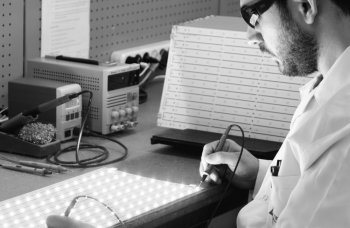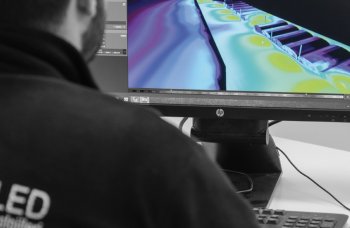How to Choose an LED Lens or Reflector

This includes the basic factors to consider when choosing an LED lens or reflector for your application. There is also information behind these factors to help you to make your decision.
WHAT ARE LED OPTICS?
LED lighting fixtures utilise at least one type of secondary optic to alter the beam of light coming from the LED source. At RS Components we have three families for secondary LED optics: Lenses, Reflectors and Optic & Holder Kits. Here is what you can expect to find in each family:
LENSES
LED lenses come in various shapes and sizes, for example round, square and hexagonal. Common lens materials include plastic and silicone. Therefore some are rigid and some are flexible.
Lenses are designed for use with single or multiple LEDs. This includes LED modules or strips.
They sit over the LEDs to create the desired lighting effect. Various properties of LED lenses enable precise control over the beams of light. LED lenses can also offer a nice aesthetic appearance by masking the LED components within.
REFLECTORS
LED reflectors sit over the LED to alter the beam of light. They are an affordable and easy-to-use solution for your lighting fitment. However, they do not offer as much control as LED lenses.
Reflectors are made using plastic and can be metal coated.LED reflectors are smooth or multifaceted inside and come in various different shapes. This enables them to create a range of lighting effects.
Some reflectors contain a sub-lens, for additional diffusion or control of the light.
OPTIC & HOLDER KITS
LED optic and holder kits contain both the LED reflector/lens plus a holder. These are called lens assemblies or reflector kits.
Lens holders provide a mechanical cut-off shield and can also be used to enhance performance. They are also much easier to install than a stand-alone lens.
Alternatively these kits may include an LED holder which holds the LED in place. The lens/reflector then simply twists on top.
FACTORS TO CONSIDER
Beam Angle
This describes the angle over which the light is distributed. Lenses and reflectors can be used to help create your desired beam angle.
Narrow beam angles, for example 40°, have a tight beam of light and are ideal for spotlights. Wide beam angles around 120° have a larger coverage for wide area lighting.


